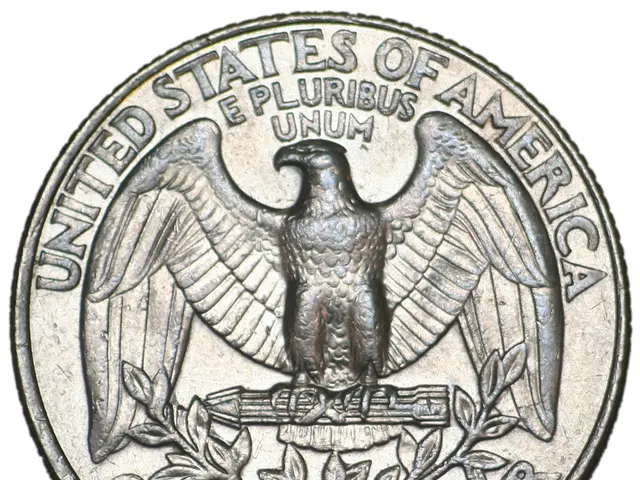Central banks are shedding dollar assets.
Revised Bank of America Claims Central Banks Ditching U.S. Treasuries
Bank of America Corp (BofA) claims that central banks aggressively sold off U.S. Treasury bonds starting in March of this year. Analysts from one of the largest U.S. banks believe these banks are eager to diversify their portfolios, with dollar-denominated assets previously dominating them heavily.
Central bank holdings of U.S. Treasuries in key economies and other major financial institutions dropped from the end of March to June 11th, roughly by 48 billion dollars, as reported by CNBC.
This trend seems peculiar and raises questions, as central banks typically buy U.S. Treasuries during a weak dollar period. However, currency strategists explain that the recent dollar weakness has failed to attract buyers of Treasuries, as the BofA notes in a significant analysis titled "Demand for U.S. Treasuries Weakens."
The appetite for Treasuries outside the U.S. has been under close scrutiny by analysts and economists over the past few months. The Trump administration's trading and fiscal policies stirred chaos and heightened volatility on financial markets, causing uncertainty. Now, there are growing concerns about the waning interest of foreign buyers in U.S. assets, particularly U.S. Treasuries. The Bloomberg Spot Dollar Index, projected for 2025, has already dropped nearly 8% and is now remarkably close to a 3-year low.
One main explanation for this trend is worries that Trump's tariffs will severely harm the U.S. economy, slowing its growth and potentially even triggering a recession, which have resurfaced in recent days with renewed fervor.
"This trend (selling Treasuries) likely reflects the intention of the official financial sector to diversify their portfolios, reducing the share of dollar-denominated assets," write the authors of the analysis. "We are concerned about the demand (for Treasuries) outside the U.S."
Foreign investors have long been crucial buyers of Treasuries. According to BofA's analysis, conducted on data from the Federal Reserve, nearly all demand for U.S. Treasuries in the first quarter of this year originated from broker-dealers and foreign investors.
This trend continues to be another piece of evidence of a "concerning picture," according to Megan Swiber, a currency strategist, because it reflects a gap between the supply of Treasuries and the demand from private investors.
"The trajectory of foreign demand raises concerns because more global investors are seeking to reduce the share of U.S. assets or increase hedging ratios," Swiber explains.
Analysts at BofA also highlight the "continued waning" of participation by foreign investors in recent U.S. Treasury auctions for 2- and 20-year U.S. Treasury bonds.
Insight: Foreign demand for U.S. Treasury bonds has indeed decreased significantly. Foreign central banks and other foreign entities, including sovereign wealth funds, have significantly reduced their holdings of U.S. Treasuries, with a reduction of about $48 billion since late March 2025 alone. This decline is notable because foreign buyers account for roughly 30% of the U.S. Treasury market, making their pullback significant for overall demand. Several factors are contributing to this downward trend in foreign demand:
- Tariff Policies and Market Volatility: The implementation of tariffs by the Trump administration in early 2025 triggered a bond sell-off and increased market volatility. This policy shift led to foreign central banks reducing their exposure to U.S. bonds, as the resulting uncertainty undermined confidence in U.S. debt as a safe investment.
- Dollar Weakness: The decline of the U.S. dollar has made Treasuries less attractive to foreign investors. Since Treasuries are often purchased as a safe haven asset and are denominated in dollars, a weakening dollar can diminish foreign investors' returns when converted back to their local currencies.
- Shift in Economic Outlook and Treasury Yield Dynamics: Traditionally, a stronger dollar and a robust U.S. economic outlook would lead to weaker demand for Treasuries, causing prices to fall and yields to rise. However, following the tariff policy announcements, this pattern disrupted. Though the dollar weakened, Treasury yields rose instead of falling, indicating increased risks that discouraged foreign investors despite the usual safe-haven appeal of U.S. debt.
- Changing Perceptions of Safe Haven: If foreign investors and central banks begin to question the status of U.S. Treasuries as a safe haven due to political and economic uncertainties, they may demand higher yields to compensate for the risk or shift to alternative investments. This shift could increase borrowing costs for the U.S. government.
While overall investor demand for Treasuries has remained reasonable for now, the significant reduction in foreign central bank holdings points to a tangible decline in foreign demand, which could influence future U.S. borrowing costs and market stability if not offset by other investors.
Investors, particularly foreign entities, are reducing their holdings of U.S. Treasuries, resulting in a decline of about $48 billion since late March 2025. This downturn in foreign demand is concerning because these investors account for approximately 30% of the U.S. Treasury market.
The authors of the significant analysis titled "Demand for U.S. Treasuries Weakens" suggest that this trend reflects the official financial sector's intention to diversify their portfolios, reducing the share of dollar-denominated assets.






